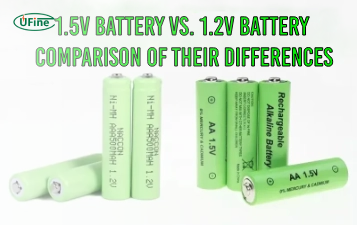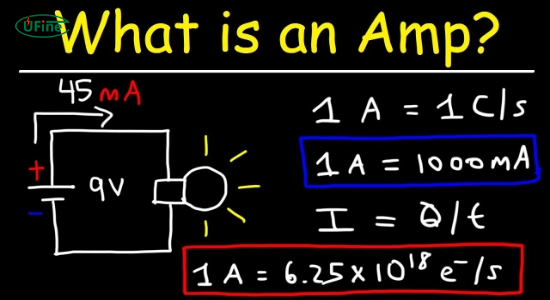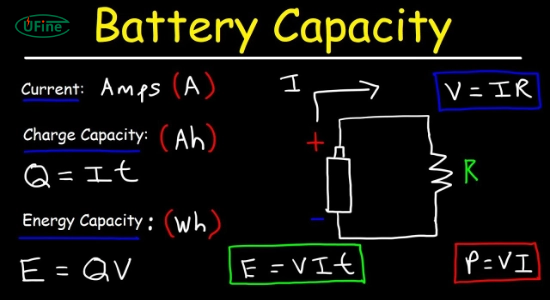
- Part 1. What is an amp?
- Part 2. What is an amp-hour?
- Part 3. The key difference between amps and amp-hours
- Part 4. How to calculate amp-hours?
- Part 5. How do amps and amp-hours impact battery selection?
- Part 6. Common applications for amp and amp-hour ratings
- Part 7. How to choose the right battery for your needs?
- Part 8. Tips for optimizing battery performance
- Part 10. FAQs
Terms like amp and amp-hour are often used to describe batteries, but not everyone understands. You’re not alone if you’ve ever been confused about these terms. These concepts are crucial in determining a battery’s performance, capacity, and suitability for applications. Whether you’re choosing a battery for your car, RV, solar setup, or any other device, understanding the difference between amps and amp-hours is essential.
In this article, we’ll explain the key differences between amps and amp-hours, how they impact battery selection, and guide you in choosing the right battery for your needs. By the end, you’ll have a solid understanding to make informed decisions and ensure you get the best performance out of your battery.
Part 1. What is an amp?
An amp (short for ampere) is a unit of measurement for electric current. Simply, it tells you the amount of electricity flowing through a circuit at any given moment. Think of it like water flowing through a pipe—amps measure the flow rate of electricity, just like gallons per minute measure the water flow.
For example, if a lightbulb draws 2 amps, 2 units of electric current flow to power it.
Why are amps important?
Amps are crucial because they indicate the electrical current a device needs to operate. Suppose a device requires a specific number of amps, and the battery or power source can’t provide it. In that case, the device won’t function properly. Understanding amps ensures compatibility between the power source and your device.
Part 2. What is an amp-hour?
An amp-hour (Ah) is a measurement of battery capacity. It tells you how much electric charge a battery can store and deliver over time. Essentially, it represents the battery’s energy storage capability.
For example, a 100Ah battery can provide 1 amp of current for 100 hours, 2 amps for 50 hours, or 10 amps for 10 hours. The total capacity remains the same, but the time varies depending on the current being drawn.
Why are amp-hours important?
Amp-hours are essential because they directly relate to how long a battery will last before needing to be recharged. Knowing your device’s power requirements and the battery’s amp-hour rating, you can calculate how long the battery will power the device.
Part 3. The key difference between amps and amp-hours
The primary difference between amps and amp-hours lies in what they measure:
- Amps: Measure the flow of electricity at a given moment.
- Amp-hours: Measure the total electric charge a battery can deliver over time.
If amps are like the speed of water flowing through a pipe, amp-hours are like the size of a water tank. One tells you the immediate flow, while the other tells you how long that flow can be sustained.
Part 4. How to calculate amp-hours?
To calculate amp-hours, you need to know the current draw of your device (in amps) and the amount of time you plan to use it (in hours). The formula is:
Amp-Hours (Ah) = Current (A) × Time (h)
For example:
If a device draws 5 amps and you plan to use it for 4 hours, the required capacity is:
5A × 4h = 20Ah
Knowing this calculation helps you select the right battery size for your needs.
Part 5. How do amps and amp-hours impact battery selection?
When choosing a battery, you need to consider both amps and amp-hours. Here’s how they impact selection:
- Amps: Ensure the battery can deliver the necessary current to power your device. If the required amps exceed the battery’s capability, the device may not work or could damage the battery.
- Amp-Hours: Match the battery’s capacity to your device’s power demands. A higher amp-hour rating means the battery will last longer but may be larger and heavier.
For example, if you’re powering a 12V refrigerator that consumes 5 amps and wants to run for 10 hours, you’ll need a battery with at least a 50Ah capacity (5A × 10h = 50Ah).
Part 6. Common applications for amp and amp-hour ratings
Understanding amps and amp-hours is crucial for various applications:
- Automotive batteries: High amps are needed to start the engine. However, amp-hours determine how long the battery can run the vehicle’s electronics when the engine is off.
- Solar power systems: Amp-hours are essential for determining how much energy storage is needed to power devices overnight.
- Portable devices: Amp-hour ratings indicate the operating time of a laptop, power bank, or other portable device.
- Marine and RV batteries: Amp-hours help plan energy usage for appliances like lights, fans, and refrigerators.
Part 7. How to choose the right battery for your needs?
When selecting a battery, consider the following steps:
- Determine your power requirements: Calculate the total amps your devices will draw and how long you need them to run.
- Check compatibility: Ensure the battery can deliver the necessary amps for your devices.
- Consider battery chemistry: Lead-acid, lithium-ion, and AGM batteries have different performance characteristics and lifespans.
- Account for inefficiencies: Real-world conditions, such as temperature and power losses, can affect battery performance. Choose a slightly higher capacity than your calculated needs.
Part 8. Tips for optimizing battery performance
- Avoid over-discharging: Deeply discharging a battery regularly can reduce its lifespan.
- Match the battery to the application: Use the appropriate battery type for your device (e.g., deep-cycle batteries for RVs and solar systems).
- Monitor usage: Use battery monitors to track power consumption and avoid running out of charge unexpectedly.
- Keep batteries charged: Regularly recharge batteries to prevent sulfation in lead-acid batteries or degradation in lithium-ion batteries.
Part 10. FAQs
-
What does 100Ah mean on a battery?
A 100Ah battery can provide 1 amp of current for 100 hours, 2 amps for 50 hours, or any other combination that multiplies to 100. The exact runtime depends on your device’s power draw. -
Can I use a higher amp-hour battery in my device?
Yes, a higher amp-hour battery will provide longer runtime without damaging your device, as long as the voltage matches and the battery can supply the required amps. -
How do I know how many amp-hours my device needs?
Check the device’s power consumption in amps and multiply it by the hours of use. For example, a 2A device running for 5 hours will need a battery with at least 10Ah capacity. -
Do amps or amp-hours affect battery lifespan?
Amp-hours don’t directly affect lifespan, but frequent deep discharges can shorten it. Amps matter because consistently drawing more current than the battery is rated can cause overheating and damage. -
What happens if my device requires more amps than the battery can supply?
If your device demands more amps than the battery can provide, it may not function correctly, or the battery could overheat and become damaged.
Related Tags:
More Articles

1.5V Battery Vs. 1.2V Battery: Comparison of Their Differences
Compare 1.2V vs 1.5V batteries: voltage, usage, rechargeability. Best for remotes, toys, cameras. Discover which AA battery suits your device.
Recommended 10 Best Batteries For Smoke Detectors
Discover the best batteries for smoke detectors in 2025. Compare top 10 9V and AA options for long-lasting, leak-proof, and reliable smoke alarm power.
Triple A Battery Voltage: Everything You Need to Know
Learn how many volts are in a triple A battery (1.5V vs 1.2V), see AAA battery voltage chart, and compare chemistry, testing, and lifespan for 2025 devices.
9V vs AA Batteries for Fire Alarm: Which One Should You Use?
Compare 9V and AA batteries for smoke detectors. Learn which type provides better lifespan, voltage, and cost efficiency to keep your fire alarms reliable.
Flashlight Battery Size: Types, Choosing Tips and FAQs
Explore flashlight battery sizes with an easy chart. Learn what batteries small flashlights use and how to pick 18650, 26650, 14500, or CR123A cells.




